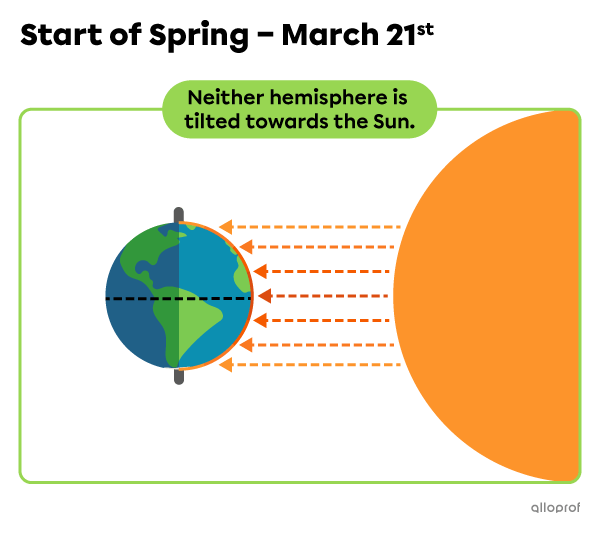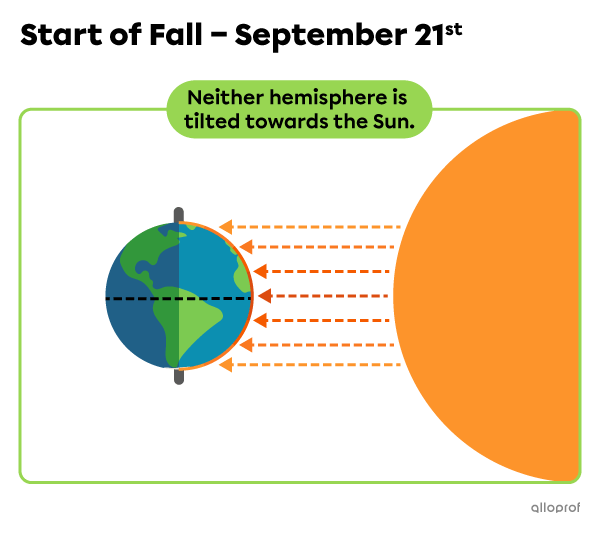Seasons | Elementary
Why Do We Have Seasons?
There are four seasons: winter, spring, summer and fall.
The Earth’s tilt is responsible for changes in temperature and the length of daytime and nighttime, over the course of seasons.
The Earth’s revolution ensures that the seasons always repeat and follow the same order, year after year.
The Earth’s Tilt

The Earth’s axis of rotation is an imaginary line around which the Earth rotates.
It is tilted approximately 23.5° away from vertical.
The Earth’s Revolution

It takes the Earth 365.25 days to complete one revolution around the Sun. This represents a year and is called the Earth’s revolution.
The following image shows the Earth’s tilt throughout a revolution. It also shows when each season begins in the Northern Hemisphere.

Attention! Sometimes the starting date of a season varies by one or two days.
Characteristics of Each Season

-
Sunlight strikes less intensely in the Northern Hemisphere than in the Southern Hemisphere.
-
December 21st is also the shortest day of the year in the Northern Hemisphere.

-
Sunlight strikes both hemispheres with the same intensity.
-
Daytime and nighttime are the same length.

-
Sunlight strikes more intensely in the Northern Hemisphere than in the Southern Hemisphere.
-
This is the longest day of the year in the Northern Hemisphere.

-
Sunlight strikes both hemispheres with the same intensity.
-
Daytime and nighttime are the same length.
